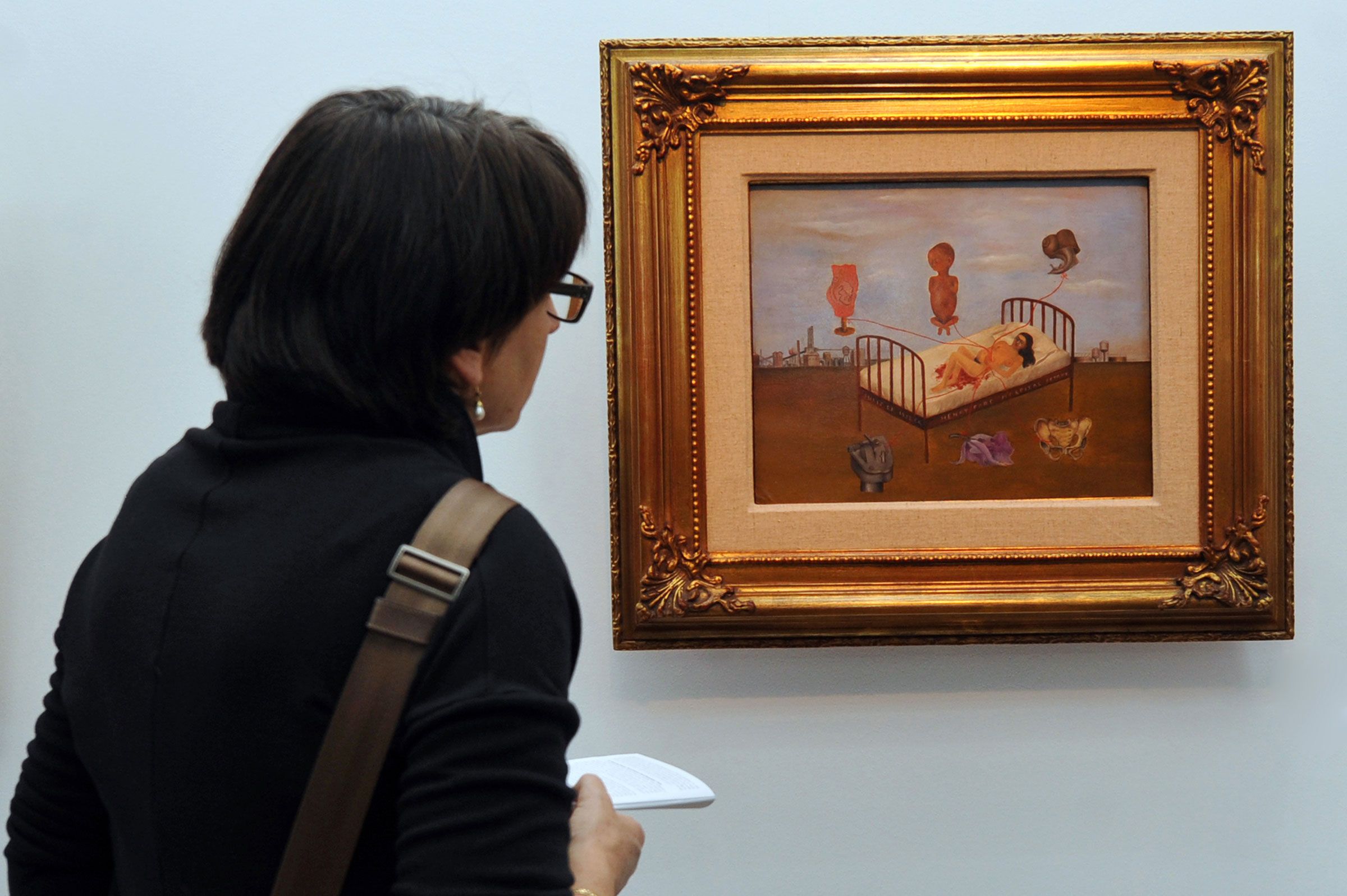
The early 1940s self-portraits of Mexican painter Frida Kahlo that show monkeys wrapped around her neck may seem playful on the surface. In reality, Kahlo painted them during a suffocating period of her life when she was tangled in a messy divorce and desperate for work.
Frida, a new documentary produced by TIME Studios out in select theaters on March 7, explores how Kahlo endured several personal tragedies and fueled her experience into her art, creating the vibrant surrealist paintings and self-portraits that made her an iconic artist.
The film, which streams on Amazon Prime on March 14, brings Kahlo’s paintings to life through animation, archival footage, and snippets from the artist’s personal writings, billing itself as the first documentary to be told entirely through her own words as well as those of her intimates. Director Carla Gutierrez’s team scoured museums for Kahlo’s letters and used excerpts from the artist’s published diary, voiced by Fernanda Echevarría Del Rivero, in the film, which allows her sharp tongue to be put on full display. In her writings, she works through her feelings on men, the economics of art, the nature of independence, and the world. She lobs a critique at the U.S.: “Everything is about appearances but deep down it’s a pile of sh-t.”
While Kahlo’s story has been covered in biographies and films, Frida stands out for its innovative use of animation that makes her iconic paintings come alive.
Frida and self-portraits
Kahlo started painting after fracturing her pelvis in a bus crash when she was a teenager. “It wasn’t violent but silent. Slow,” she reflects in the film in voiceover. “The handrail went through me like a sword through a bull.”
The crash altered everything. Kahlo spent months in a body cast—“bored as hell,” as she once put it—and her mother devised a makeshift easel that allowed her to paint in bed. She even hung a mirror over her daughter’s head so she could paint self portraits, which became a motif throughout her career. One reason Kahlo painted so many self portraits is because it was so painful to go out and about. “She was pretty immobile later in life, so the model that she had available was herself,” Gutierrez. In one excerpt from Kahlo’s writing that appears in the documentary, she describes her self-portraits as “the true expression of my emotions.”
How art became a lifeline for Frida Kahlo
The documentary shows that painting was a cathartic outlet for Kahlo when she was grieving after a miscarriage in 1932. In an emotional rollercoaster, she initially considered an abortion because she was afraid her body was too fragile to carry the fetus to term, but a doctor encouraged her to keep the baby. When she miscarried, she coped by painting, including the 1932 self-portrait “Henry Ford Hospital,” in which she’s lying in a pool of blood in a bed. As she once wrote, per the documentary, “the only thing I know is that I paint because I need to.” Kahlo suffered through two more miscarriages in her life.
“The paintings that came after that, that came from that loss and pain, are what actually made her find her voice as an artist,” says Gutierrez.

Then Kahlo saw painting as necessary to support herself so she wouldn’t be dependent on her husband, the artist Diego Rivera, who married her in 1929 but had several affairs with other women, including Kahlo’s own sister. “I need to paint so I can make a living. Then I will be free,” she wrote, the documentary shows. “I no longer accept a damn cent from Diego. I will never accept money from any man until I die.” The couple divorced, but Rivera begged her to marry him again, and she agreed but continued to support herself with the earnings from her work and split household expenses. The 1937 self-portrait “Memory, the Heart” reflects her disappointment with Rivera, by showing a metal band piercing her heart and imps sitting on either end like they’re on a seesaw.
Kahlo struggled to sell paintings until she passed away in 1954 at the age of 47. But what’s clear is that painting was about much more than a paycheck. Per her words in the documentary, “I’ve painted little without the slightest desire for glory or ambition, with the sole conviction to give myself pleasure, and the power to make a living with my trade. I’ve lost so many things I wanted for my life, but painting completed my life.”
More Must-Reads From TIME
- The 100 Most Influential People of 2024
- Coco Gauff Is Playing for Herself Now
- Scenes From Pro-Palestinian Encampments Across U.S. Universities
- 6 Compliments That Land Every Time
- If You're Dating Right Now , You're Brave: Column
- The AI That Could Heal a Divided Internet
- Fallout Is a Brilliant Model for the Future of Video Game Adaptations
- Want Weekly Recs on What to Watch, Read, and More? Sign Up for Worth Your Time
Write to Olivia B. Waxman at olivia.waxman@time.com